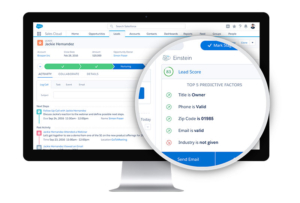One question that has come up over and over in our Salesforce.com implementations is “What is a lead?” On the surface the answer is simple, but how any given company uses leads can be tricky. The conversations can last for hours, with heated debates on when to use leads and when to convert them to accounts, contacts and opportunities.
Let’s take one step back. In a perfect world, your company has tons of leads. Each is carefully vetted and qualified by a BDR Team, then passed to sales by lead conversion. An opportunity is created, as is a new account and contact record. The converter took the time to make sure no duplicate records were created, in the scenario that the company or contact already existed as an account.
 That perfect world doesn’t exist for most companies, and using leads often does create duplicate records. The bicameral nature of leads and contacts in Salesforce can also create confusion with marketing automation tools, such as Marketo or Pardot, both of which stores people in just one object and has to sync with two in Salesforce.
That perfect world doesn’t exist for most companies, and using leads often does create duplicate records. The bicameral nature of leads and contacts in Salesforce can also create confusion with marketing automation tools, such as Marketo or Pardot, both of which stores people in just one object and has to sync with two in Salesforce.
For most companies using leads makes sense, and proper training and safeguards must be put in place to avoid the previously mentioned pitfalls. But for companies with a niche market, these problems can be avoided by thinking a little outside the proverbial box and simply not use leads altogether!
For companies whose target market is narrow, say all banks in the US or all plastic surgeons, every one of these records constitutes a possible customer. Rather than load them in as leads, for some companies our recommendation has been to load them all in as accounts (perhaps using “Person” accounts), and manage the status and sales life-cycle within fields on the account.
As a technical aside, the exception in these companies is to maintain the web-to-lead functionality so that website forms still flow into Salesforce. These leads are de-duped and converted immediately.
This solution is not for most companies, but for some it has dramatically made their Salesforce.com lives easier. Reporting is more straight-forward, duplicates are less likely and the overall user experience is simpler.



